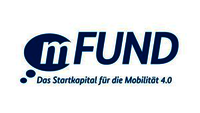SAUBER
Satellite-based system for the monitoring, forecasting and simulation of air pollutants for sustainable urban and regional development
Problem
Air pollution still represents an enormous risk to human health in the 21st century, and yet cities and regional associations face a major obstacle in dealing with this problem: Currently they only have access to selective data, which means they lack the requisite spatial overview to take effective action. This blind spot is to be closed by data from the Earth observation programme Copernicus. The latest satellite missions, for example, can monitor air pollutants daily at high resolution while orbiting the earth.
Project Goals
The aim of SAUBER is to make the data from the Copernicus programme available for sustainable urban and regional development. SAUBER will not only provide a comprehensive spatial overview of current air quality, but also – thanks to the use of artificial intelligence – forecast and simulate future air quality. In this way, heavily polluted areas can be identified in advance and the threat of air pollution reduced or even completely avoided through proactive planning.
Implementation
In order to increase the accuracy and depth of the satellite data, it will be supplemented with additional information such as traffic and weather data as well as the results of local pollution monitoring stations. The combined dataset can then be evaluated using analytical methods to give a comprehensive yet detailed picture of air quality. The full spatial coverage offered by this picture is a great improvement on the current selective measurements of air quality while also providing a higher level of detail than satellite data.
Following research papers have been published so far:
Petry, L.; Herold, H.; Meinel, G.; Meiers, T.; Müller, Inken; Kalusche, E.; Erbertseder, T.; Taubenböck, H.; Zaunseder, E.; Srinivasan, V.; Osman, A.; Weber, B.; Jäger, S.; Mayer, C.; Gengenbach, C., 2020: Air quality monitoring and data management in Germany – Status quo and suggestions for improvement. In: ISPRS International Archives of the Photogrammetry, Remote Sensing and Spatial Information Sciences, 4/W2-2020, p.37-43.



![[Translate to English:] Leibniz Gemeinschaft](/fileadmin/user_upload/ioer_de/img/logo-leibniz-gemeinschaft.svg)
![[Translate to English:] Dresden concept](/fileadmin/_processed_/2/1/csm_logo-dresden-concept_430c661ad7.png)

